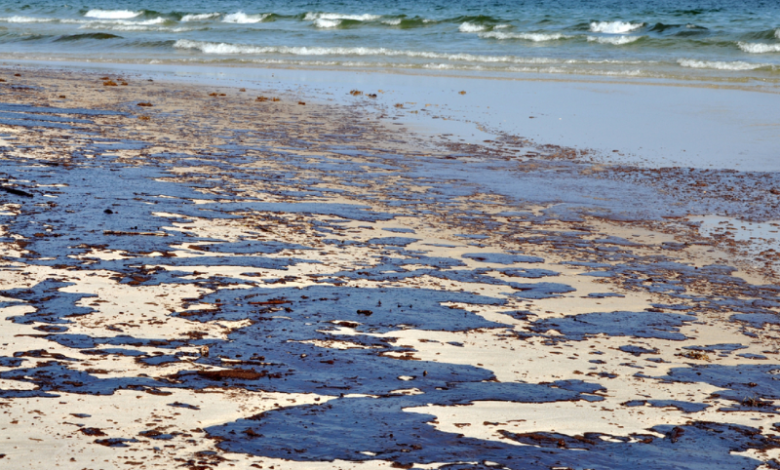Russia Declares Emergency in Crimea Following Black Sea Oil Spill

On Saturday, Russia announced a regional state of emergency in Crimea which it seized from Ukraine in 2014 while crews cleaned tons of contaminated sand and earth on either side of the Kerch Strait following a Black Sea oil leak the previous month.
Mikhail Razvozhaev, the Russian installed governor of Sevastopol proclaimed a state of emergency in the city allowing officials the freedom to make quick decisions like forcing inhabitants to vacate their houses.
The Kerch Strait divides Russia’s Krasnodar region from Crimea’s Kerch Peninsula and runs between the Black Sea and the Sea of Azov. According to the emergency ministry on Saturday, rescuers have now removed almost 86,000 metric tons of toxic dirt and sand.
On December 15, a storm struck two aging ships causing the oil to leak. One ran aground and the other sank. In and around the summer resort of Anapa almost 10,000 workers have been sifting through sandy beaches to remove sticky and odorous gasoline oil. Seabirds, dolphins and porpoises have all been reported dead by environmental organizations.
On the Telegram messaging app, the ministry of emergencies said that oil contaminated soil had been gathered in Crimea whose annexation by Russia has not been acknowledged by the majority of other nations and the larger Kuban region in Russia.
Video footage showing dozens of workers in protective gear carrying sacks of soil onto diggers and others using shovels to scrape dirt off the sand was released by the ministry.
According to Russia’s transport ministry, scientists have determined that the amount of oil products that leaked into the sea was less than previously thought, roughly 2,400 metric tons.
Embedding link: https://x.com/volcaholic1/status/1869012170551472439
According to official media, the two damaged tankers which were over 50 years old were transporting about 9,200 metric tons (62,000 barrels) of oil products when the accident occurred. Heavy M100-grade fuel oil which freezes at 25 degrees Celsius (77 degrees Fahrenheit) was involved in the spill. Unlike other oil products, it sinks to the bottom or stays stuck in the water column instead of floating to the top.



